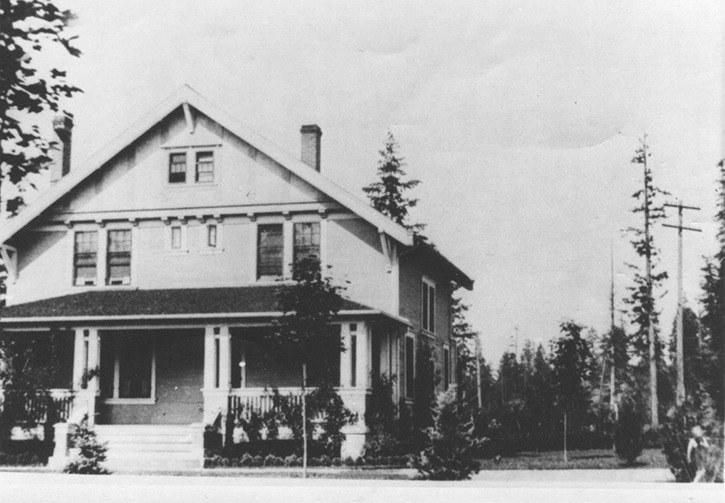Crumbling concrete and fading photographs are about all that’s left of a mining community called Granby.
But for a brief time, Granby, built by the Granby Consolidated Mining, Smelting and Power Company for 500 miners and their families, flourished south of Nanaimo.
Built in 1917 to extract a section of the Upper Douglas coal seam originally discovered in 1852 on the Nanaimo River, the town and mine straddled Spruston Road in Cassidy between the Nanaimo River and Haslam Creek.
Granby operated B.C.’s two largest copper smelters and the second-largest copper mine in the British Empire. Granby coal was refined into coke (fuel) to fire the smelters.
Granby aimed to avoid disruptive labour unrest of the era by keeping its workforce happy with the best-equipped, most modern mine and living quarters. The township was designed for 50 houses with running water, lawns, gardens and boulevards, electricity generated on site, arc-lighted paved streets, a recreation hall, fire hydrants, parks and playgrounds and modern sewerage. There was a large rooming house for single workers and a mess hall. The colliery, first aid station, blacksmith and carpentry shops were also state-of-the-art.
“This was much nicer than average,” said Christine Meutzner, Nanaimo Community Archives manager. “The homes were of a style considered forward-looking and modern, in their day. There was a theatre, a gym, I believe, a separate home for bachelors – all those sorts of things that would have made a complete community.”
 Other innovations included recirculating water for the coal washery. A combination of gravity-driven systems and electric locomotives transported product, workers and equipment. Production started in 1918 and at its peak the mine produced about 1 million kilograms of coking-quality coal per eight-hour shift.
Other innovations included recirculating water for the coal washery. A combination of gravity-driven systems and electric locomotives transported product, workers and equipment. Production started in 1918 and at its peak the mine produced about 1 million kilograms of coking-quality coal per eight-hour shift.
But the Granby mine was plagued with methane gas blowouts and collapsing coal faces. James Mitchell, Jacob Matvichuk, James McKeowan, Murdock McLeod and others added their names to a tragic list of men who died of gas asphyxiation, explosions or were crushed to death by mining equipment or cave-ins.
The hazards, the Great Depression, and a coal seam that played out in 1932 brought an end to Granby. In just 15 years, the operation tumbled from a jewel of modern technical achievement to a ghost town being reclaimed by forest. The property was stripped of buildings and equipment, even its sewer lines, for other projects. Some homes, including the Granby Mine Residence at 523 Vancouver Ave., listed in the City of Nanaimo Community Heritage Register, were moved to Nanaimo and Ladysmith.
“They didn’t build little cheapies. These were grand homes of the Granby mine,” said Chris Sholberg, city culture and heritage planner. “If you asked me if there are any buildings that have been relocated in the heritage register, this would be the first one I’d bring you to. The Granby Mine Residence as the best example we have of that, if not the only example.”
The mine’s remains can be glimpsed from Spruston Road among encroaching forest fertilized by 447 million kilograms of washery tailings – estimated at up to five metres deep – left over from billions of kilograms of coal unearthed at the site.
